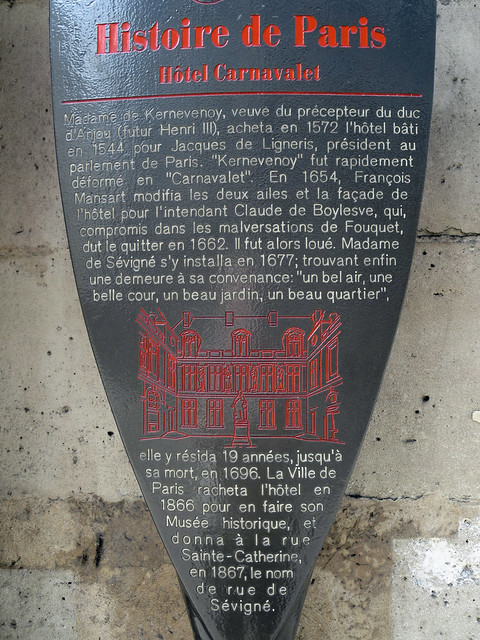Hôtel Carnavalet. Madame de Kernevenoy, veuve du précepteur du duc d'Anjou (futur Henri III), acheta en 1572 l'hôtel bâti en 1544 pour Jacques de Ligneris, président au parlement de Paris. "Kernevenoy" fut rapidement déformé en "Carnavalet." En 1654, François Mansart modifia les deux ailes et la façade de l'hôtel pour l'intendant Claude de Boylesve, qui, compromis dans les malversations de Fouquet, dut le quitter en 1662. Il fut alors loué. Madame de Sévigné s'y installa en 1677; trouvant enfin une demeure à sa convenance: "un bel air, une belle cour, un beau jardin, un beau quartier", elle y résida 19 années, jusqu'à sa mort, en 1696. La Ville de Paris racheta l'hôtel en 1866 pour en faire son Musée historique, et donna à la rue Sainte-Catherine, en 1867, le nom de rue de Sévigné.
This is an approximate position
23 rue de Sévigné, Paris
[geolocate this address]
Google Streetview
OpenStreetMap
Subjects
None identified yet. Subjects are curated by hand so please bear with us.

